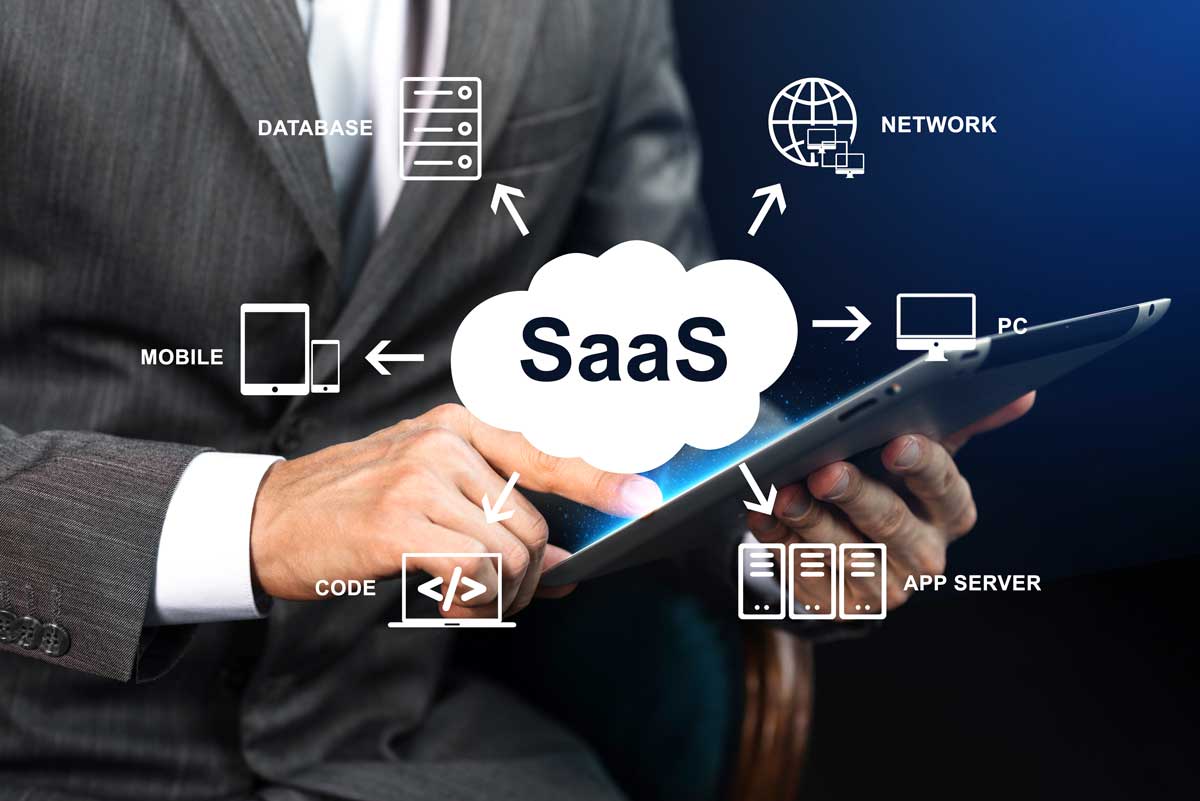In the dynamic landscape of the modern business world, staying ahead of the curve requires innovative solutions that streamline operations and enhance efficiency. One such groundbreaking innovation that has transformed the way businesses operate is Software as a Service (SaaS). In this blog post, we will delve into the intricacies of SaaS, exploring its impact on business processes and uncovering the myriad advantages offered by the SaaS business model.
I. Understanding SaaS: A Paradigm Shift in Software Delivery
In recent years, SaaS has emerged as a game-changer in the software industry. Unlike traditional software models where applications are purchased and installed on individual computers, SaaS delivers software over the internet, allowing users to access applications via a web browser. This shift from ownership to access has redefined the way businesses manage their software needs. Behind every scalable SaaS platform is reliable SaaS hosting, which ensures consistent performance, data security, and seamless access for users across locations.
A. SaaS Business Processes: Transforming Operations
Cost-Efficiency: One of the primary advantages of SaaS lies in its cost-effectiveness. Traditional software often involves significant upfront costs for licensing and installation. In contrast, SaaS operates on a subscription model, allowing businesses to pay for the services they use, often on a monthly or annual basis. This not only reduces initial investment but also provides a predictable and manageable cost structure.
Scalability and Flexibility: SaaS solutions are designed to be scalable, accommodating the evolving needs of businesses. Whether a company is a startup or an enterprise, SaaS applications can easily scale up or down based on requirements. This scalability ensures that businesses do not need to invest in additional infrastructure or software as they grow.
Automatic Updates and Maintenance: SaaS providers handle updates and maintenance, ensuring that businesses always have access to the latest features and security patches. This alleviates the burden on IT departments, allowing them to focus on more strategic initiatives rather than routine maintenance tasks.
II. Advantages of the SaaS Business Model
A. Accessibility and Collaboration: One of the key benefits of SaaS is its accessibility. With applications hosted in the cloud, users can access them from anywhere with an internet connection. This promotes collaboration among teams, allowing for seamless communication and cooperation regardless of geographical locations.
B. Rapid Deployment: Traditional software implementations can be time-consuming and resource-intensive. SaaS solutions, on the other hand, can be rapidly deployed, often within a matter of days. This agility is particularly advantageous for businesses looking to implement new tools quickly or adapt to changing market conditions.
C. Enhanced Security Measures: SaaS providers invest heavily in security measures to protect their clients’ data. With dedicated teams focusing on security, SaaS applications often provide robust protection against cyber threats, including encryption, authentication protocols, and regular security audits.
D. Predictable Costs and ROI: The subscription-based model of SaaS provides businesses with predictable costs, making budgeting and financial planning more straightforward. Additionally, the pay-as-you-go model ensures that businesses only pay for the services they use, maximizing return on investment.
III. Case Studies: Real-World Success Stories
To illustrate the impact of SaaS on business processes and the advantages of its model, let’s explore a few real-world case studies:
A. Salesforce: Transforming Customer Relationship Management (CRM)
Salesforce, a leading SaaS provider, has revolutionized CRM by offering a cloud-based platform accessible to businesses of all sizes. With features such as lead management, sales forecasting, and customer analytics, Salesforce has empowered companies to streamline their sales processes, enhance customer relationships, and drive growth.
B. Microsoft 365: Unifying Productivity Tools
Microsoft 365, a comprehensive SaaS suite, has transformed the way businesses approach productivity. By combining familiar tools such as Word, Excel, and PowerPoint with collaboration features like Teams and SharePoint, Microsoft 365 has created a seamless environment for communication and document management, fostering productivity and innovation. Utilizing business PowerPoint templates within this suite can further enhance presentations and streamline the creation of professional, engaging content.
IV. Challenges and Considerations
While SaaS offers numerous benefits, it is essential for businesses to be aware of potential challenges and considerations:
A. Data Security and Compliance: Businesses must ensure that SaaS providers adhere to strict security standards and compliance regulations, especially when dealing with sensitive data. Conducting thorough due diligence and selecting reputable providers is crucial in mitigating these risks.
B. Integration with Existing Systems: Seamless integration with existing software and systems can be a challenge when adopting SaaS. Businesses should carefully evaluate the compatibility of SaaS solutions with their current infrastructure to avoid disruptions in operations.
C. Dependency on Internet Connectivity: As SaaS relies on internet connectivity, businesses need to ensure a stable and reliable connection to access their applications. This dependency can pose challenges in regions with limited internet infrastructure.
V. Conclusion: Embracing the Future of Software with SaaS
In conclusion, SaaS has emerged as a transformative force in the business world, reshaping how organizations approach software utilization. The advantages of the SaaS business model, from cost-efficiency to enhanced collaboration, position it as a key enabler of growth and innovation. As businesses continue to navigate the evolving landscape, embracing SaaS solutions can provide a competitive edge, allowing for agility, scalability, and a focus on core business objectives. The journey towards a SaaS-driven future is not without challenges, but with careful consideration and strategic implementation, businesses can unlock the full potential of this revolutionary technology.
